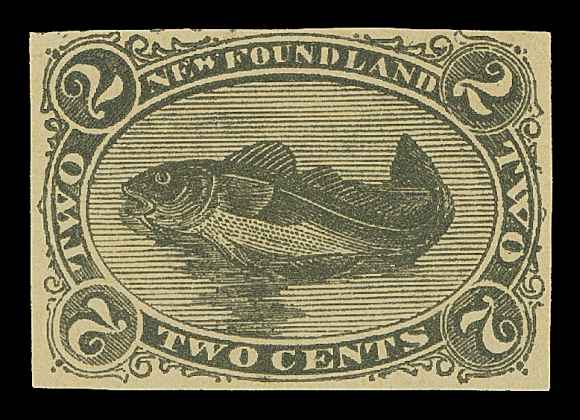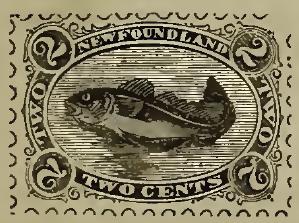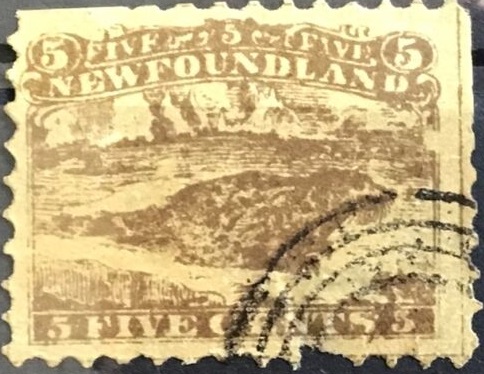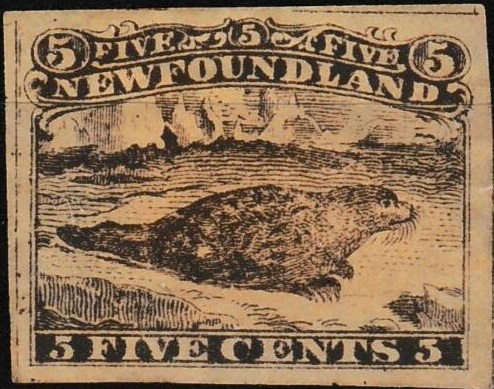 |
|||||
|
|||||
| Preview of Stamps Catalogue: VOLUME 1 |
 |
|||||
|
|||||
| Preview of Stamps Catalogue: VOLUME 1 |
Terre-Neuve - Neufundland
Return To Catalogue - Newfoundland (Canada) 1857-1865, pence issues - Newfoundland 1866-1896, cents issues, part 2 - Newfoundland 1897-1920 - Canada - Forgeries of the first issue - Forgeries of the second issue, 2 p, 4 p, 6 p - Forgeries of the second issue, 6 1/2 p, 8 p, 1 Sh - Postal stationery and Fiscal stamps
Note: on my website many of the
pictures can not be seen! They are of course present in the catalogue;
contact me if you want to purchase it.
1/2 c red (1887) 1/2 c black (1894)
These stamps are perforated 12.
Value of the stamps |
|||
vc = very common c = common * = not so common ** = uncommon |
*** = very uncommon R = rare RR = very rare RRR = extremely rare |
||
| Value | Unused | Used | Remarks |
| 1/2 c red | * | * | |
| 1/2 c black | c | c | |
I have seen no forgeries of these stamps.
1 c lilac (1868) 1 c lilac (different type) (1870) 1 c lilac (different type) (1880) 1 c green (1887)
The 1 c lilac (1868 issue) exists rouletted.
Value of the stamps |
|||
vc = very common c = common * = not so common ** = uncommon |
*** = very uncommon R = rare RR = very rare RRR = extremely rare |
||
| Value | Unused | Used | Remarks |
| 1 c lilac | *** | *** | 1868 issue |
| 1 c lilac | *** | *** | 1870 issue |
| 1 c lilac | * | * | |
| 1 c green | * | * | |
I have seen a 'postcard' in the above design with the curved "ONE CENT" label in 1 c green.
Forgeries, example


The second forgery has a circular cancel with unreadable letters
and "VF" in the center, a cancel that appears on many
forgeries of other countries as well.
The above forgery is a Spiro forgery.
2 c green (value in 4 corners) (1866) 2 c green (value in 2 corners) (1880) 2 c orange (1887)
The 1866 issue exists rouletted.
Value of the stamps |
|||
vc = very common c = common * = not so common ** = uncommon |
*** = very uncommon R = rare RR = very rare RRR = extremely rare |
||
| Value | Unused | Used | Remarks |
| 2 c green | *** | *** | 1866 issue |
| 2 c green | *** | ** | 1880 issue |
| 2 c orange | * | * | |
Forgeries, examples:
Spiro forgery:


(Spiro forgery, easily recognized by the
cancel)
The above forgery is a Spiro forgery, it is lithographed (the genuine stamp is engraved). The cancels are typically Spiro cancels (i.e. 6-bar, 4 concentric rings or British colonial type as above). The value circles are solid.
Other forgeries:




The left stamp has a "408" numeral cancel which can
also be seen on a 5 c brown harp seal forgery.
The perforation in the above forgeries is very large. Furthermore this forgery is engraved instead of lithographed. There are guidelines in the stamp borders (there are no such lines in the genuine stamps). The eye of the fish is round with a white circle (in the genuine stamps the pupil is mostly coloured). One of them has a "VF" cancel (see VF cancelled forgeries)
.


Two forgeries with the "T" of "TWO" too far
to the right. Next to it a more primitively printed forgery but
in the same design with a partly "ANN." cancel.
Moens seems to have made a forgery of this stamp (1866 issue) as well, it can easily be recognized, because it is black instead of green. Futhermore the numerals are larger than in the genuine stamp.





I presume this the Moens forgery on the left. The second image
shows an image from Le Timbre Poste by Moens No.38, February
1866, page 9. The design of this forgery is identical to the
image given in "The illustrated catalogue of postage
stamps" by J.E.Gray (1870, page 127, third image). A similar
image appears in the catalogue of Placido
Ramon de Torres "Album Illustrado para Sellos de
Correo" of 1879 (information passed to me thanks to Gerhard
Lang, 2016) on page 227 (fourth image above). In the last image
the defaced copper block from which these forgeries were made?

Forgery of the 2 c red, with especially the left '2' totally
different.
5 c brown (1866) 5 c black (1868) 5 c blue (1876) 5 c blue (1880, different type, no values at the top)
The 5 c blue (1876 issue) only exists rouletted. For the other stamps, they should be perforated 12.
Value of the stamps |
|||
vc = very common c = common * = not so common ** = uncommon |
*** = very uncommon R = rare RR = very rare RRR = extremely rare |
||
| Value | Unused | Used | Remarks |
| 5 c brown | RR | R | |
| 5 c black | RR | R | |
| 5 c blue | *** | * | |
| 5 c blue | ** | * | |
Forgeries, examples:
In the above forgery the tail of the seal is not split into two parts. The whole background seems to be filled with icebergs. The label containing "NEWFOUNDLAND" sticks out farther to the left and right than the value ovals. There are guidelines in the margins. I've been told that the above forgeries are made by Fournier, but I can't find them in his 1914 pricelist. These forgeries can be found with a cork-cancel, 4 concentric rings, row of oblong dots etc. I think the above forgeries are Spiro forgeries.

Another forgery type?





The left stamp has a "408" numeral cancel which can
also be seen on a 2 c green codfish forgery.
Note the very wide perforation in the above forgery, the tail of the seal is also not split. These forgeries also have guidelines in the margins.



A similar forgery type, but now imperforate and in black? The
claws appear more sharp. The brown stamp appears to be from the
same forger(?), it has a typical Spiro cancel. Also a block of
four.
Other forgeries exist, from Moens (imperforate, left foot has 4 claws, no shading below nose whiskers), Oneglia (?, with perfortation 11 1/2, left foot has 6 claws) and an unkown forger (brown, blue and black, perforated 14 with bottom frame line very faint or absent).


Moens forgery, imperforate, left foot has 4 claws, no shading
below nose whiskers. It looks like some printed perforation can
be observed at the bottom? A similar image appears in the
catalogue of Placido Ramon de Torres
"Album Illustrado para Sellos de Correo" of 1879
(information passed to me thanks to Gerhard Lang, 2016) on page
227 (second image shown above).




Engraved forgeries, made by Oneglia; these exist with a numeral
"1" cancel.
Newfoundland (Canada) 1866-1896, cents issues, part 2
More reading material: "Newfoundland Fakes and Forgeries" by Ed.Wener.